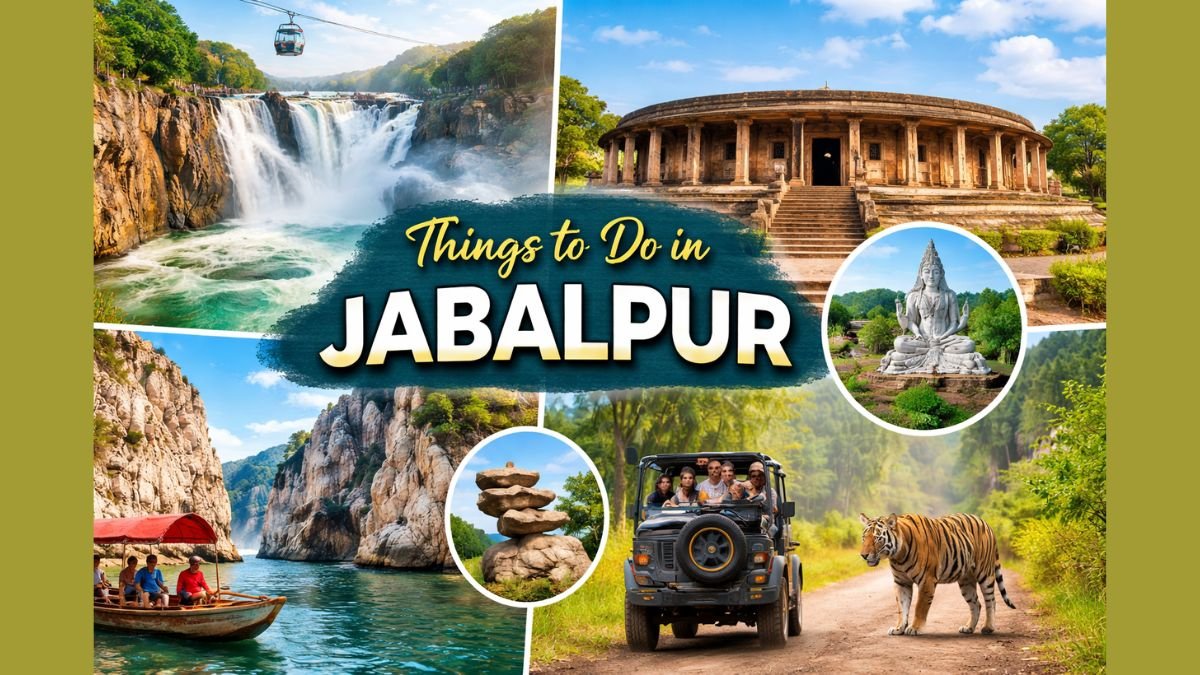- What is the Amarnath Yatra?
- When to Go for the Amarnath Yatra
- How to Reach the Amarnath Yatra
- Routes for the Amarnath Yatra
- Spiritual Importance of the Amarnath Yatra
- Key Attractions Along the Amarnath Yatra
- Where to Stay During the Amarnath Yatra
- Food Options on the Amarnath Yatra
- Planning Your Amarnath Yatra
- Challenges of the Amarnath Yatra
- Nearby Places to Explore
- Fascinating Facts About the Amarnath Yatra
- FAQs About the Amarnath Yatra
- Related Posts
Your Guide to the Amarnath Yatra: A Spiritual Trek to Lord Shiva’s Cave
The Amarnath Yatra is a sacred journey to the Amarnath Cave in Jammu and Kashmir, where a natural ice lingam forms every year, symbolizing Lord Shiva. This pilgrimage, set in the stunning Himalayas, combines faith, adventure, and nature’s beauty. Each year, thousands of devotees take this challenging trek to seek blessings and experience a deep spiritual connection. Whether you’re planning your first Amarnath Yatra or looking for tips, this guide will help you prepare for a memorable journey.
What is the Amarnath Yatra?
The Amarnath Yatra is a Hindu pilgrimage to the Amarnath Cave, located at 3,888 meters in the Himalayas. The cave is home to an ice lingam, believed to represent Lord Shiva. According to legend, this is where Shiva shared the secret of eternal life with Goddess Parvati. The Yatra draws people seeking spiritual growth and a chance to connect with nature’s raw beauty.
Why It’s Special
The Amarnath Yatra is unique because of the ice lingam, which grows and shrinks with the moon’s phases. This natural wonder, along with the cave’s remote location, makes the journey a powerful mix of devotion and adventure. Over 300,000 pilgrims join the Amarnath Yatra each year during the holy month of Shravan, making it one of India’s most revered pilgrimages.
When to Go for the Amarnath Yatra
The Amarnath Yatra happens every year in July and August, during the Hindu month of Shravan. For 2025, it’s scheduled from July 3 to August 9, ending on Raksha Bandhan. This period is ideal because the ice lingam is at its fullest, and the weather is suitable for trekking.
Weather Conditions
At base camps like Pahalgam and Baltal, temperatures range from 9°C to 34°C. Higher up near the cave, it can feel close to freezing, especially at night. Be ready for sudden rain or snow, as the Himalayan weather can change quickly. Landslides are also a risk, so always check weather updates before starting the Amarnath Yatra.
Peak Season vs. Off-Season
The peak season for the Amarnath Yatra is July to August. During this time, you’ll find lively crowds, full support from authorities, and a festive vibe. However, it can get crowded, and costs for transport or stays may rise. Outside these months, heavy snow makes the cave unreachable, so the Yatra doesn’t happen.
How to Reach the Amarnath Yatra
Getting to the Amarnath Yatra involves reaching the base camps at Pahalgam or Baltal. Here’s how you can travel:
By Air
The closest airport is in Srinagar, called Sheikh ul-Alam International Airport. It’s about 91 km from Pahalgam and 72 km from Baltal. You can catch daily flights from cities like Delhi, Mumbai, or Bangalore. From Srinagar, hire a taxi or take a state bus to Pahalgam (2.5 hours) or Baltal (2 hours). For a faster option, book a helicopter to Panchtarni, 6 km from the cave, costing around INR 5,000–7,000 one-way.
By Train
The nearest railway station is Jammu Tawi, about 178 km from Pahalgam and 159 km from Baltal. Trains like the Jhelum Express connect Jammu to major cities. From there, take a taxi or JKSRTC bus to Pahalgam (5–6 hours) or Baltal (4–5 hours).
By Road
From Srinagar, Pahalgam is 91 km (2.5–3 hours) and Baltal is 72 km (2–2.5 hours) via NH1. Shared taxis cost INR 300–500, while private cabs are around INR 2,500. If you’re coming from Jammu, it’s a 6–7-hour drive to either base camp. Roads are decent but can be narrow in hilly areas, so watch for landslide warnings.
Local Transport
At Pahalgam or Baltal, you can hire ponies (INR 2,000–5,000 round-trip), palkis (INR 7,000–10,000), or walk. Walking is free but tough, so choose based on your fitness level.
Routes for the Amarnath Yatra
The Amarnath Yatra offers two main routes to the cave, each with its own charm and challenges.
Pahalgam Route
This 48-km route starts at Pahalgam and takes 3–5 days. It goes through Chandanwari, Sheshnag, and Panchtarni before reaching the Amarnath Cave. It’s longer but less steep, with beautiful views of meadows and mountains. This route is great for those who want a scenic, gradual trek.
Baltal Route
The Baltal route is shorter, about 14 km, and can be done in 1–2 days. It’s steeper and more demanding, passing through Domail, Barari, and Sangam. If you’re short on time or prefer a quicker trip, this is the better choice.
Helicopter Option
Helicopters fly from Baltal or Pahalgam to Panchtarni, cutting down travel time. Book through the Shri Amarnath Shrine Board (SASB) website or operators like Pawan Hans. From Panchtarni, it’s a 6-km trek to the cave.
| Route | Distance | Duration | Difficulty | Highlights |
|---|---|---|---|---|
| Pahalgam | 48 km | 3–5 days | Moderate | Scenic meadows, Sheshnag Lake |
| Baltal | 14 km | 1–2 days | Challenging | Quick access, Himalayan views |
| Helicopter | 6 km (from Panchtarni) | 1 day | Easy | Fast, less physical strain |
Spiritual Importance of the Amarnath Yatra
The Amarnath Yatra is deeply meaningful for Hindus. The ice lingam, which forms naturally from dripping water, is seen as a divine sign of Lord Shiva. It grows and shrinks with the moon, adding to its mystique. Legend says Shiva chose this cave to share the secret of immortality with Parvati, making it a sacred spot. Visiting the cave and seeing the lingam is believed to bring spiritual peace and blessings.
Key Attractions Along the Amarnath Yatra
The Amarnath Yatra isn’t just about the cave. The journey offers stunning sights and unique experiences.
Amarnath Cave
The cave is the heart of the Yatra, housing the ice lingam and smaller formations representing Parvati and Ganesha. It’s a place for prayer and reflection.
Pahalgam
This charming hill station, a base for the Yatra, has the Lidder River and spots like Betaab and Aru Valleys. It’s perfect for relaxing before or after the trek.
Sheshnag Lake
On the Pahalgam route, this turquoise lake at 3,658 meters is surrounded by snowy peaks. It’s a peaceful stop during the Amarnath Yatra.
Panchtarni
A campsite near the cave, Panchtarni has five streams symbolizing the five elements. It’s a great spot for rest and meditation.
Baltal
The base for the shorter route, Baltal offers breathtaking views of the Himalayas and a lively pilgrim camp atmosphere.
Things to Do
- Trekking: Test your stamina on the Pahalgam or Baltal route.
- Pray.va: Offer prayers and join aarti at the cave.
- Photography: Snap pictures of the stunning landscapes.
- Camping: Stay in tents at Panchtarni or Sheshnag for a unique experience.
- Local Culture: Chat with sadhus and locals, and join the Chhari Mubarak procession, a ceremonial march with a holy scepter.
Where to Stay During the Amarnath Yatra
Finding a place to stay depends on your starting point and budget. Here are some options:
Pahalgam
- Budget: Himalaya House (INR 1,500–2,500/night), Pine View Guest House (INR 1,000–2,000).
- Mid-Range: Hotel Mountview (INR 3,000–5,000), Paradise Inn (INR 2,500–4,000).
- Luxury: WelcomHotel by ITC (INR 8,000–12,000), Hotel Heevan (INR 6,000–10,000).
- Unique: JKTDC huts or cottages by the Lidder River (INR 2,000–5,000).
Baltal
- Budget: JK Tourism tents (INR 500–1,000/person), local guesthouses (INR 1,000).
- Mid-Range: Shrine Board camps (INR 1,500–2,500).
- Unique: Pre-pitched tents with basic amenities.
En Route
Shrine Board tents at Chandanwari, Sheshnag, and Panchtarni cost INR 500–1,500 per person. Some ashrams offer free or donation-based stays. Book early through the SASB website.
Tip: Reserve accommodations 2–3 months ahead for the Amarnath Yatra, as spots fill up fast.
Food Options on the Amarnath Yatra
You’ll find a mix of local and simple meals during the Amarnath Yatra.
Local Favorites
- Kashmiri Wazwan: Try rogan josh or yakhni in Pahalgam or Srinagar (INR 500–1,000).
- Langar Meals: Free vegetarian food like dal, rice, and roti at community kitchens along the route.
- Kahwa: Warm saffron tea to keep you cozy.
- Snacks: Corn, nuts, or halwa at base camps (INR 50–150).
Where to Eat
- Pahalgam: Dana Pani for North Indian meals (INR 200–500), Trout Beat for trout curry (INR 300–600), or Hotel Heevan for upscale dining (INR 800–1,500).
- Baltal: Small dhabas for tea, parathas, or Maggi (INR 50–150).
- En Route: Shrine Board stalls and langars offer affordable, hygienic meals.
- Srinagar: Nathu’s Rasoi for vegetarian food (INR 200–400), Mughal Darbar for Wazwan (INR 500–1,000).
Planning Your Amarnath Yatra
What to Pack
- Clothes: Warm jackets, trekking shoes, raincoat, gloves, and socks.
- Essentials: Sunglasses, sunscreen, flashlight, power bank, snacks, and a water bottle.
- Documents: ID, Yatra permit, health certificate, and emergency contacts.
- Medical: First-aid kit, altitude sickness pills (check with a doctor), and personal meds.
Safety Tips
- Register Early: Get a Yatra permit (INR 150) and health certificate from authorized doctors.
- Health Prep: Walk 4–5 km daily and practice breathing exercises for 2–3 months to prepare for the Amarnath Yatra.
- Trekking: Stick to marked paths, travel in groups, and avoid night treks.
- Security: The route is guarded by over 50,000 personnel, with RFID tracking and drones. Keep the Shrine Board helpline handy (0194-2501679).
- Environment: Use eco-friendly bags and avoid plastic to protect the Himalayas.
Local Customs
- Respect: Wear modest clothes, remove shoes at the cave, and don’t touch the lingam.
- Greetings: Say “Om Namah Shivaya” to connect with pilgrims.
- Langars: Accept food gratefully and avoid waste.
- Photography: No photos inside the cave during prayers, but outside is fine.
Languages
Hindi, Kashmiri, and English are common. Urdu is also spoken at base camps.
Challenges of the Amarnath Yatra
The Amarnath Yatra is not easy. The high altitude can cause breathing issues or Acute Mountain Sickness (AMS). The terrain is rough, and weather can be unpredictable, with risks of rain, snow, or landslides. Security is tight, but past incidents like natural disasters or threats have occurred. Proper preparation, like getting a health check and packing right, is key to a safe Amarnath Yatra.
Nearby Places to Explore
If you have extra time, visit these spots near the Amarnath Yatra routes:
- Pahalgam (36 km from Chandanwari): Enjoy Betaab Valley or a walk by the Lidder River.
- Srinagar (91 km from Pahalgam): Take a shikara ride on Dal Lake or visit Mughal Gardens.
- Sonamarg (35 km from Baltal): See Thajiwas Glacier or try horse riding.
- Gulmarg (140 km from Pahalgam): Great for gondola rides and meadows.

Fascinating Facts About the Amarnath Yatra
- Ancient Roots: The Yatra is mentioned in texts like the Rajatarangini from the 11th century.
- Discovery: A shepherd named Buta Malik is said to have rediscovered the cave in the 15th century.
- Ice Lingam: The lingam’s size changes with the moon, seen as a divine miracle.
- Modern History: The Yatra was formalized in 1934 by Maharaja Hari Singh.
- Eco Efforts: High footfall has led to plastic bans and stricter rules to protect the environment.
FAQs About the Amarnath Yatra
How do I register for the Amarnath Yatra?
Register online at jksasb.nic.in for INR 150. You’ll need a Compulsory Health Certificate from an authorized doctor.
Is the Amarnath Yatra safe?
Yes, with over 50,000 security personnel, RFID tracking, and medical camps, it’s well-protected. Follow safety tips and prepare for high-altitude trekking.
What is the cost of the Amarnath Yatra?
Costs vary: permits (INR 150), transport (INR 300–7,000), accommodation (INR 500–12,000), and ponies/palkis (INR 2,000–10,000). Plan for INR 10,000–20,000 overall, depending on choices.
Can I take the Amarnath Yatra by helicopter?
Yes, helicopters fly from Pahalgam or Baltal to Panchtarni (INR 5,000–7,000 one-way). Book early via the SASB website.
How tough is the Amarnath Yatra?
The Pahalgam route is moderate but long (48 km), while Baltal is short but steep (14 km). High altitude and weather make it challenging, so train in advance.
The Amarnath Yatra is a journey of faith, strength, and beauty. From the sacred ice lingam to the stunning Himalayan trails, it’s an experience that stays with you forever. Plan ahead, pack wisely, and respect local customs for a safe and fulfilling trip. May your Amarnath Yatra be blessed with peace and joy. Om Namah Shivaya!
To check other Articles, Click Here.

“I’m a travel enthusiast who loves exploring new places and sharing stories from my adventures. Through this website, I share simple tips, hidden gems, and ideas to make your trips more enjoyable. Whether it’s beaches, mountains, or local food, I enjoy discovering and writing about it all. When I’m not traveling, I’m planning my next trip or helping others explore new destinations. Let’s discover the joy of travel together!”





